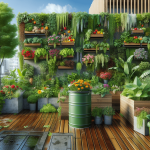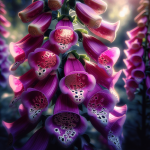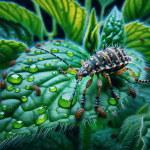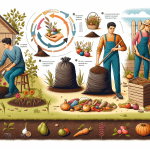This post may contain affiliate links. As an Amazon Associate, we may earn commissions from qualifying purchases.
How do you select plants for a bog garden?
When it comes to creating a bog garden, you might find yourself asking where to start. Fret not, my friend, because you’re about to embark on an invigorating journey to cultivate a lush, moist haven in your backyard. Selecting the right plants for a bog garden might seem daunting, but with a bit of guidance, you’ll become an expert.
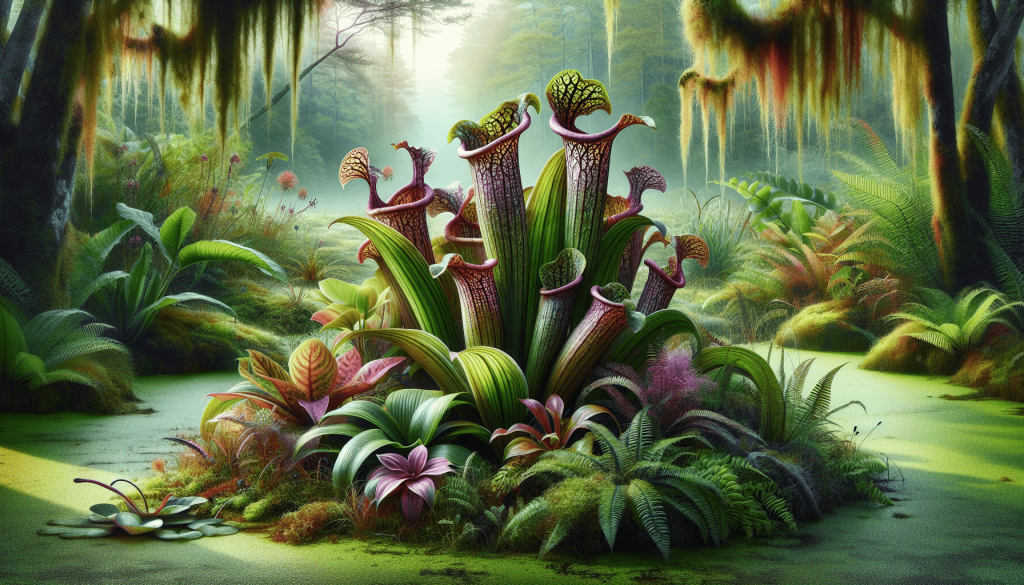
What is a Bog Garden?
First things first, let’s get on the same page. A bog garden is a wet, marshy area where the soil remains consistently moist. Think of it as a small marshland brought to life right in your backyard. Such a garden can host a variety of unique, moisture-loving plants that wouldn’t thrive in a regular garden setting.
Think about the ecosystem of a bog—spongy, wet soil teeming with vegetation and life. It is different from a regular garden due to its unique conditions, demanding plants that thrive in high-moisture environments.
Assess Your Garden Conditions
Before you rush out to buy plants, get your Sherlock Holmes hat on and investigate your garden. Identify areas that naturally collect water or have poor drainage. An existing wet area is an excellent candidate for transformation into a bog garden.
Ask yourself:
- Is the area consistently moist throughout the year?
- Is the soil peaty or clay-like, retaining water efficiently?
- Does the spot receive adequate sunlight?
An ideal bog garden location is one where water naturally accumulates, ensuring your plants will enjoy everlasting hydration.
Soil Preparation
Bog plants like their feet wet, and the key to making them happy is proper soil preparation. You’ll want to mimic the natural conditions of a bog as closely as possible. Here’s how:
- Excavate the Area: Dig about 12 inches deep for small plants or around 18-24 inches for larger species.
- Add a Liner: Consider placing a pond liner or heavy-duty plastic sheeting at the base to keep the soil consistently damp.
- Add Layers: Fill the excavation with water-retentive materials such as clay or a mix of sand and peat moss. This will form the bog’s substrate.
- Moisten the Soil: Saturate your new garden bed with water, ensuring it stays soggy.
Choosing the Right Plants
Now comes the most thrilling part—choosing your bog plants. Think of this as building a team, where every member plays a crucial role. You’ll find an array of perennials, grasses, and even carnivorous plants that thrive in these swampy conditions.
Perennials for Your Bog Garden
Perennials are like that reliable friend who’s always around. These plants will return year after year, ensuring your bog garden remains vibrant.
| Perennial Plant | Height | Bloom Time | Light Requirements |
|---|---|---|---|
| Swamp Milkweed | 3-5 feet | Mid to late Summer | Full sun to part shade |
| Marsh Marigold | 1-2 feet | Spring | Full sun to part shade |
| Cardinal Flower | 3-4 feet | Late Summer | Full sun |
| Siberian Iris | 2-4 feet | Late Spring | Full sun to part shade |
| Turtlehead | 3-4 feet | Late Summer to Fall | Full sun to part shade |
Ornamental Grasses and Sedges
Ornamental grasses add texture, height, and interest to your bog garden. They are like the stylish accents that make your garden pop.
| Grass/Sedge | Height | Light Requirements | Additional Notes |
|---|---|---|---|
| Japanese Sedge | 1-2 feet | Part shade | Evergreen in mild climates |
| Blue Joint Grass | 3-4 feet | Full sun to part shade | Tolerates a range of soils |
| Northern Sea Oats | 2-3 feet | Full sun to part shade | Attractive seed heads |
| Variegated Sweet Flag | 1-2 feet | Part shade | Fragrant foliage |
Carnivorous Plants
Add an exotic touch with carnivorous plants. They not only look otherworldly but also help keep insect populations under control.
| Carnivorous Plant | Height | Additional Notes |
|---|---|---|
| Pitcher Plant | 1-2 feet | Requires consistently moist soil |
| Sundew | Under 1 foot | Likes full sun and poor, acidic soil |
| Venus Fly Trap | Under 1 foot | Prefers indirect light and humid conditions |
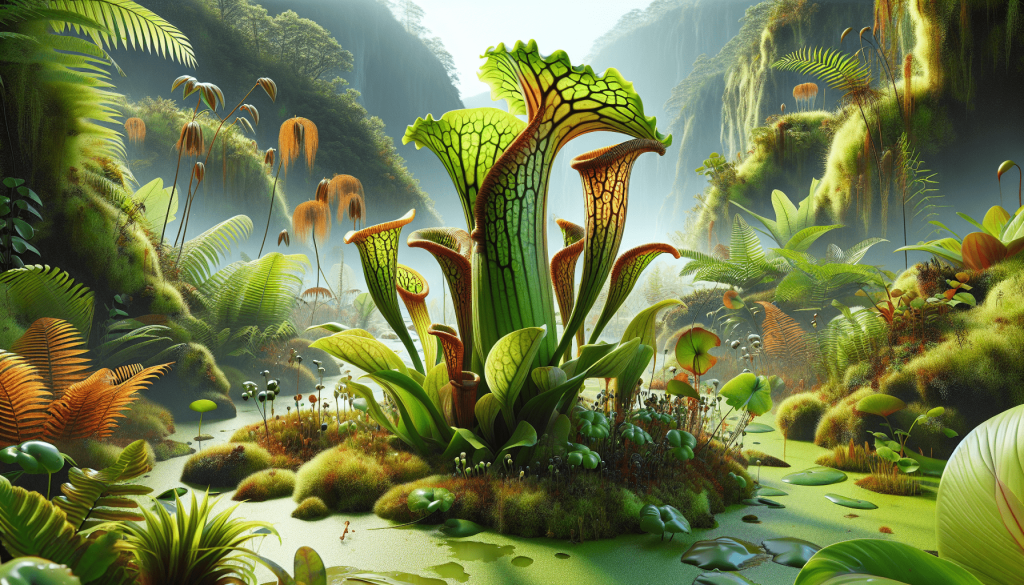
Maintenance and Care
After all, the fun of selecting and planting, you’ve got some responsibilities to maintain your bog garden. Unlike other garden types, bog gardens have unique care requirements.
Watering
Watering is your primordial task. Keep the soil consistently moist. Depending on your climate, this might mean daily watering during dryer periods. Installing an automatic irrigation system could be a game-changer here.
Pruning and Deadheading
- Prune regularly to remove dead foliage, which can add unnecessary bulk and stunt new growth.
- Deadheading spent flowers can encourage more blooms and keep your plants looking their best.
Weeding
Be vigilant about weeding since the moist conditions can be an invitation to unwanted guests. Regular weeding will keep your bog garden healthy.
Common Issues and Solutions
Your bog garden will face some challenges. Knowing what to expect ensures you’re prepared to tackle these problems head-on.
| Common Issue | Symptoms | Solutions |
|---|---|---|
| Root Rot | Browning foliage, wilting plants | Ensure soil isn’t waterlogged, improve drainage with sand or gravel |
| Pests | Holes in leaves, sluggish growth | Introduce beneficial insects, use organic pesticides |
| Algae Overgrowth | Green film on water surface | Remove debris, reduce fertilizers |
Designing Your Bog Garden
Who says planning and planting a bog garden can’t be fashionable? Let your inner garden designer flourish by considering these tips.
Create Layers
Utilize different plants of varying heights to create a layered look. This not only maximizes space but also adds visual interest. Taller plants should typically go towards the back if your garden backs against something, and shorter ones in the front.
Mixing Textures
Combine different textures and forms. Think broad leaves of the Marsh Marigold against the spiky foliage of Sweet Flag. These contrasting textures create a dynamic and visually appealing garden.
Seasonality
Consider the bloom times of your chosen plants to ensure there’s always something eye-catching throughout the seasons. For instance, Marsh Marigold will shine in the spring, and Cardinal Flower will take center stage in the late summer.
Sustainability Tips
Being eco-friendly is not just a buzzword; it’s a commitment to maintaining a healthier environment.
- Use Organic Mulch: Mulch helps retain moisture and suppress weeds, all while decomposing to enrich the soil.
- Compost: Don’t let your kitchen scraps go to waste. Composting provides your bog garden with much-needed nutrients.
- Rainwater Harvesting: Collect rainwater to irrigate your garden. It’s free and better for your plants than treated tap water.
Final Thoughts
Creating a bog garden is more than just a gardening project; it’s an opportunity to bring a unique ecosystem to your backyard. The key to success is in understanding the needs of moisture-loving plants and maintaining a consistently wet environment. With the right selection and care, your bog garden will thrive, offering a lush, verdant escape for both you and nature.
So grab your gardening gloves and dive into the exciting world of bog gardening. The marshy paradise awaits!

